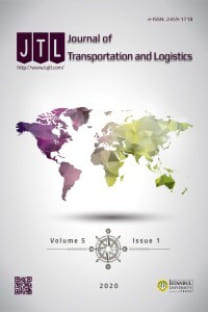Bir Hizmet Olarak Hareketlilik-MaaS Perspektifi ve Türkiye Analizi
Şehirleşmenin pek çok avantajı beraberinde getirmesinin yanı sıra, ciddi nüfus artışlarıyla birlikte planlama doğru yapılmadığı taktirde barınma sorunları, aşırı kalabalık sebebiyle kısıtlı alanlarda yaşamak zorunda kalmak, işsizlik, gece kondu yaşamının artması, su ve kanalizasyon altyapısının yetersiz hale gelmesi, kentsel kirlilik ve suç oranlarında artış gibi olumsuzluklara sebep olacaktır. Bu olumsuzluklar ulaşım ve hareketlilik alanında çok çeşitli şekillerde ortaya çıkmaktadır. Trafik sıkışıklığı, otopark sorunları, toplu taşıma altyapısının yetersiz hale gelmesi, gürültü ve çevre kirliliği, daha uzun seyahat süreleri, kamusal alan kaybı, yürüyüş alanlarının azalması ve bireysel otomobil bağımlılığı acilen çözülmesi gereken kent içi ulaşım problemleridir. Bu problemler doğrultusunda ve kentsel hareketlilik ortamında meydana gelen hızlı değişimlere yönelik olarak dünyanın her yerinde yenilikçi ve teknolojiye dayanan çözümler sunulmaktadır. Aynı zamanda dünyada hareketlilik hizmetlerinin sayısının da her geçen gün hızla artıyor olması sebebiyle, kullanıcılar seyahatin en iyi yolunu seçerken, tüm bu hizmet seçenekleri içinden en uygun olanını bulmakta zorlanmaktadırlar. Bu çalışmada tüm bu durumlar için çözüm olarak değerlendirilebilecek öne çıkan en önemli kavramlardan biri olan hizmet olarak ulaşım (TaaS) ya da güncel bilinen adıyla hizmet olarak hareketlilik (MaaS) kavramı incelenerek Türkiye için önerilere yer verilmektedir.
Anahtar Kelimeler:
Akıllı Ulaşım Sistemleri, Sürdürülebilir Hareketlilik, Bir Hizmet Olarak Hareketlilik, MaaS, Türkiye MaaS
The Perspective of Mobility as a Service (MaaS) and an Analysis of Türkiye
In addition to the many advantages, urbanization also causes negative issues such as housing problems, having to live in limited areas due to overcrowding, unemployment, more slum areas, inadequate water and sewage infrastructure, increased urban pollution, and increased urban crime rates when the necessary planning is not done correctly in response to serious population increases. These negative issues manifest in a wide variety of ways in the field of transportation and mobility, with traffic congestion, parking problems, inadequate public transport infrastructure, noise and environmental pollution, longer travel times, loss of public spaces, reduced walking areas, and individual automobile dependency being urban transportation problems that urgently need solving. In response to these problems and the rapid changes in the urban mobility environment, innovative technology-based solutions are being offered all over the world. At the same time, the number of mobility services in the world is growing rapidly, and users are faced with the challenge of choosing the best way to travel. This study examines mobility as a service (MaaS) as one of the most prominent concepts able to be considered for all solving these situations and provides recommendations for Türkiye.
Keywords:
Intelligent Transportation Systems, Sustainable Mobility, Mobility as a Service MaaS, Türkiye MaaS, Akıllı Ulaşım Sistemleri, Sürdürülebilir Hareketlilik, Bir Hizmet Olarak Hareketlilik,
___
- Arias-Molinares, D., & García-Palomares, J. C. (2020, October 1). The Ws of MaaS: Understanding mobility as a service fromaliterature review. IATSS Research, Vol. 44, pp. 253–263. Elsevier B.V. https://doi. org/10.1016/j.iatssr.2020.02.001
- Aurecon. (2022). What is Mobility as a Service? Retrieved May 20, 2022, from https://www.aurecongroup.com/expertise/urban-mobility-integrated-transport/defining-maas-mobility-as-a-service
- Barreto, L., Amaral, A., & Baltazar, S. (2018). Urban Mobility Digitalization: Towards Mobility as a Service (MaaS); Urban Mobility Digitalization: Towards Mobility as a Service (MaaS). In 2018 International Conference on Intelligent Systems (IS).
- García, J. R. R., Lenz, G., Haveman, S. P., & Bonnema, G. M. (2020). State of the art of mobility as a service (MaaS) ecosystems and architectures-an overview of, and a definition, ecosystem and system architecture for electric mobility as a service (eMaaS). World Electric Vehicle Journal, 11(1). https:// doi.org/10.3390/WEVJ11010007
- Hensher, D. A., Ho, C. Q., Mulley, C., Nelson John D., Smith, G., & Wong, Y. Z. (2020). Understanding Mobility as a Service (MaaS): Past, Present and Future.
- Hietanen, S. (2019). A Brief History of MaaS Global, the company behind the Whim app. Retrieved May 19, 2022, from Whim website: https://whimapp.com/helsinki/en/history-of-maas-global/
- ILLINGWORTH, J. (2018, November 16). The History of Mobility as a Service. Retrieved May 19, 2022,from mobilleo website: https://www.mobilleo.com/the-history-of-mobility-as-a-service/
- International Association of Public Transport (UITP). (2019). Mobility as a Service. Retrieved from www. uitp.org
- König, D., Piri, E., Karlsson, M., Sochor, J., & Heino, I. (2017). Technology for MaaS. https://www. researchgate.net/publication/317416475_Deliverable_5_Technology_for_MaaS_MAASiFiE_project_ funded_by_CEDR
- Nur Khalid. (2019). Could Mobility as a Service solve our transport problems? Retrieved from https://www.theiet.org/media/3666/mobility-as-a-service-report.pdf
- Signor, L., Karjalainen, P., Kamargianni, M., Matyas, M., Pagoni, I., Stefanelli, T., … Geier, T. (2019). Mobility as a Service (MaaS) And Sustainable Urban Mobility Planning. Brussels,. Retrieved from https://www. eltis.org/sites/default/files/mobility_as_a_service_maas_and_sustainable_urban_mobility_planning.pdf
- Transit Protocol. (2019). What is Mobility as a Service? Retrieved May 22, 2022, from Transit Protocol website: https://medium.com/@transitprotocol/what-is-mobility-as-a-service-672259066c87
- Ulaştırma ve Altyapı Bakanlığı. (2020a). AUS Terimler Sözlüğü. Ankara. Retrieved from https://hgm.uab. gov.tr/uploads/pages/akilli-ulasim-sistemler-aus/aus-terimleri-sozlugu.pdf
- Ulaştırma ve Altyapı Bakanlığı. (2020b). Ulusal Akıllı Ulaşım Sistemleri Strateji Belgesi ve 2020-2023 Eylem Planı. Ankara. Retrieved from https://www.uab.gov.tr/uploads/announcements/ulusal-akilli-ulasim- sistemleri-strateji-belgesi-v/ulusal-akilli-ulas-im-sistemleri-strateji-belgesi-ve-2020-2023-eylem-plani. pdf
- United Nations. Economic Commission for Europe. Inland Transport Committee, & Printed at United Nations. (2020). Transport trends and economics 2018-2019 : mobility as a service.
- Başlangıç: 2015
- Yayıncı: İstanbul Üniversitesi
Sayıdaki Diğer Makaleler
Yasin KILIÇLI, Emrullah KIPÇAK
Radyo Frekans Tanımlama Teknolojisinin Depo Yönetimine Katkıları
Lojistik Köy Seçimi için AHP-TOPSIS Temelli Bir Karar Verme Yaklaşımı
Çanakkale-Balıkesir Çıkışlı Çok Modlu Lojistik Faaliyetlerinde 1915 Çanakkale Köprüsünün Rolü
Mehmet GÜRTÜRK, Yener PAZARCIK
Sulaimon ADEBİYİ, Jonathan EKPUDU, Olamide AWE
Exploring the Sources of Centrality in the Turkish Domestic Airport Network
Keziban SEÇKİN CODAL, Samet GÜNER
A Method for Public Transit OD Estimation Using Transit Smart Card Data
İsmail Fatih CEYHAN, Ferhat DEMİRCİ
Bir Lojistik Firmasının En Kısa Yol Problemine Düğüm Kombinasyonu Algoritmasının Uygulanması
